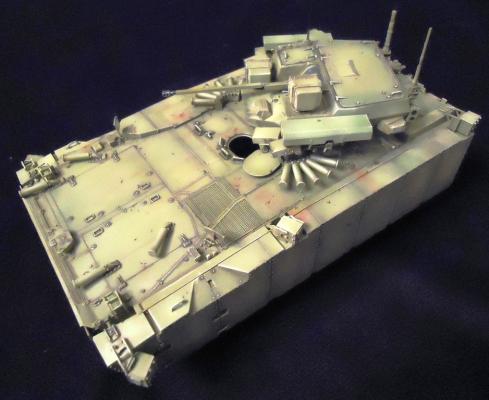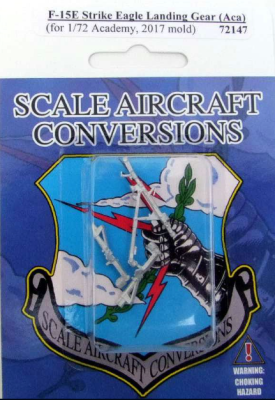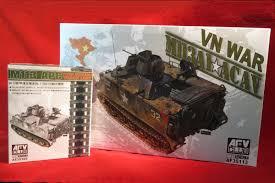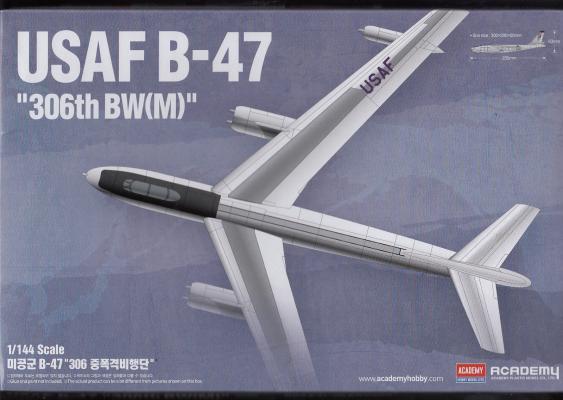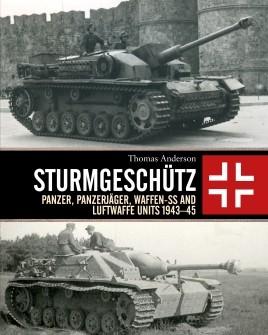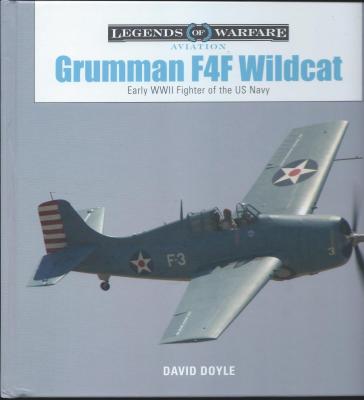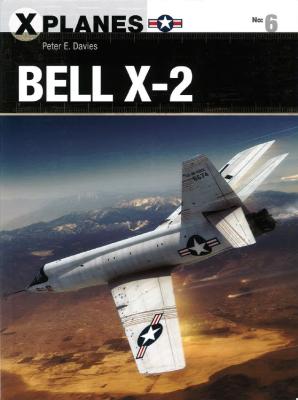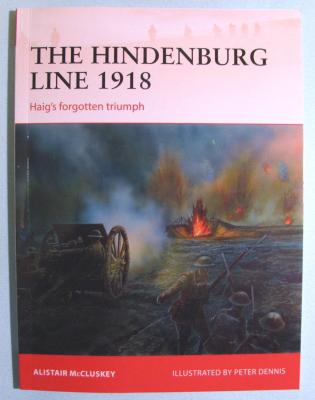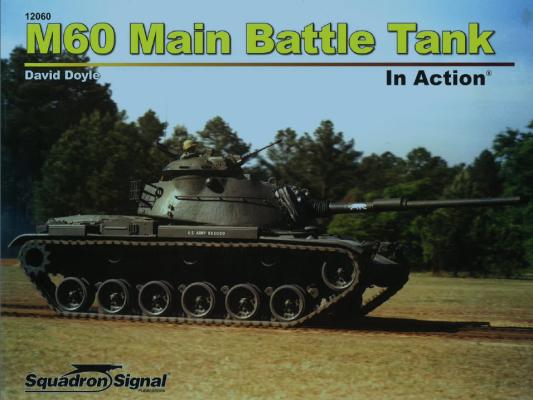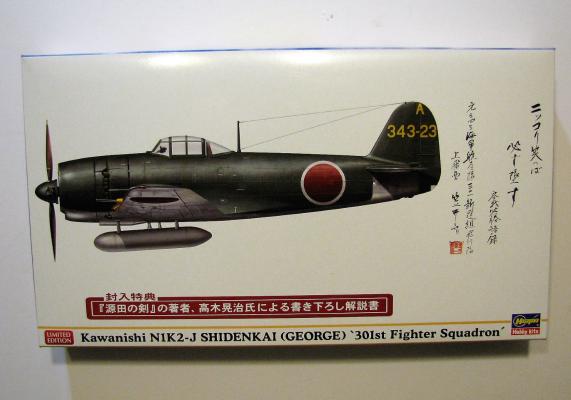Russia seems to be having a surge of military development these days, suggesting some expansionist policies which go far beyond the scope of a model review. What this offers for the modeler, however, is a wide range of interesting equipment never seen before. The Kurganets-25 IFV is a good example of this. Heralding back to the BMP-2 and -3 of the previous generation, this new machine seems to be the epitome of both defensive and offensive capabilities, literally festooned with sensors and targeting electronics. The spaced armor enhances survivability on the battlefield, while its armament makes it a worthy opponent for most challenges it might encounter.
What's New
We at IPMS continue to thank Ross and his Team at SAC for supporting the IPMS USA reviewer corps with what has turned into a monthly release schedule with extremely useful and well-thought out landing gear additions for the modeling crowd out here in the modeling world. What started out as an “I don’t know if they will sell” idea a few years ago has flourished into a busy worldwide trade for modelers seeking just a bit more out of their model accessories…
This review is for the SAC landing gear released for the relatively new 1/72 F-15E from Academy. This kit is a jewel; there are two areas needing true replacements for a contest level model, that being the “featherless” open afterburner nozzles, which are supplied simplified, and the rather thick one-piece canopy over the extremely well-detailed cockpit. Those issues are for others to address… SAC provided us three metal parts to replace the kit-supplied plastic gear.
Background
As a young man in the late 1960’s living in Canada, each weekday night I used to watch “The CBS Evening News” with Walter Cronkite. This was my window on the world, so to speak. And it seemed that almost every night the first thing that I saw through this window involved “the war in Vietnam”. Mr. Cronkite would tell me how many US troops had been killed or wounded, and then I would see a video clip from a correspondent in Saigon, or in some rice paddy somewhere in the countryside. Vietnam, I thought, was a place I didn’t EVER want to visit. Often in the background of the television videos, there were TWO objects regularly seemed to appear at some point during the newscast. One was a helicopter, often many, and the other was an M113 APC. These apparently, were the chariots that the Americans rode into battle, be it on the ground, or in the air.
History
The B-47 was the first swept-wing jet bomber in the US Air Force’s inventory, serving the USAF from 1951 to 1969. The US Navy flew some EB-47Es until 1977. Development began in 1943, and the design changed several times until Boeing came up with a 6-jet aircraft with the engines in pods under the wings. Because of the size of the engine pods, the main landing gear was set up as a “bicycle”, with 2 main gear under the fuselage, and smaller outriggers under the engine pods. With this setup, the B-47 could not rotate the nose on takeoff. The main gear was set so the aircraft sat at optimum takeoff angle at all times. The B-47 was subsonic, but extremely fast for a 1950s, setting a number of time and distance records, with speeds around 600 miles per hour.
Initially deployed with German forces in 1940, Sturmgeschütz (Stug) assault guns were purpose-built fully tracked armored fighting vehicles designed to support the infantry during the initial assault on enemy positions, especially useful for knocking out strong points such as bunkers. When the Germans invaded Russia in 1941 in Operation Barbarossa, they got a nasty surprise with the appearance on the battle field of heavily armed and armored Soviet tanks such as the T-34/76 and KV-1. The Stug assault guns were discovered to be excellent tank destroyers. They were quicker and cheaper to produce than tanks, making them a good “bargain” on the battlefield. As the war progressed, the Stug was up-gunned to deal with ever more lethal Soviet tanks, and spread across the battle fields as German industry struggled to keep up with tank losses.
This is a new series for me at least. This is a nice hardback book that covers the Grumman F4F Wildcat and the FM series of Wildcats built by Eastern Aircraft Division of General Motors during WWII. The Wildcat continued in production and to fight throughout the war even as newer and better aircraft became available.
The book has 12 chapters each covering the different variants. The layout is the first chapter on the XF4F-2, followed by chapters each on the following: XF4f-3 and F4F-3, the F4F-3 in detail, XF4F-5, XF4F-6/F4F-3A, F4F-3S, XF4F-4, F4F-4, F4F-7, XF4F-8, FM-1, FM-2 and Wildcat in combat.
This is the third book in this new Osprey series authored by Peter E. Davies. The previous tomes include the Bell X-1 (1), North American X-15 (3), and the future book on the North American XB-170 Valkyrie (7). Peter lives in Bristol, U.K. and as authored or co-authored at least nineteen book on modern American combat aircraft, many with Osprey Publishing. He was published by the Naval Institute Press in 1997 with his hardcover book, The Harrier Story, co-authored with Anthony M. Thornborough. His Schiffer Military History hard cover on the Gray Ghosts, U.S. Navy and Marine Corps F-4 Phantoms published in 2000 is considered a must have. Peter published a hardcover book with Crowood Press, North American F-100 Super Sabre, in 2003. He has also covered many aircraft in Osprey’s Combat Aircraft series, Osprey’s Air Vanguard series, and Osprey’s Duel series.
If you are a person interested in the Great War, you will likely enjoy this new release from Osprey as part of their “Campaign” series of books. In this new offering from Osprey Publishing, author Alister McCluskey writes about the late war offensive on what the Allies referred to as “the Hindenburg Line” on the Western Front. The story along with photos (both historical and of the landscape today), artwork, and maps helps to tell the story of the battles that raged from late September into early October 1918.
David Doyle’s latest book continues to expand on Squadron Signal’s long standing In Action series that initiated back in 1971. This is a completely updated and expanded edition over Squadron’s earlier Armor in Action number 23, a 50-pager on the Patton by Jim Mesko that was published in 1987. This 2017 release is essentially a new book, encompassing 80 pages.
History
The N1K was originally developed as a floatplane for forward land bases but by the time it entered service Japan was on the defensive. Kawanishi engineers had proposed in 1941 that the N1K could be a formidable land-based fighter too and a land-based version N1K1-j (J indicated land based fighter modification of the original floatplane version) was produced as a private venture by the company and first flew in December 1942. Due to it being a mid-wing design (because of the floats & large prop) a new design was begun just 4 days after the first test flight. The major defects being addressed were the wing and long landing gear. The wings were moved to a low position, which permitted the use of shorter, conventional undercarriage, the fuselage was lengthened and the tail redesigned. The first flight was on January 1944 and production of the N1K2-J "Shiden-Kai" (Kai standing for Modified) started in April of that year.

